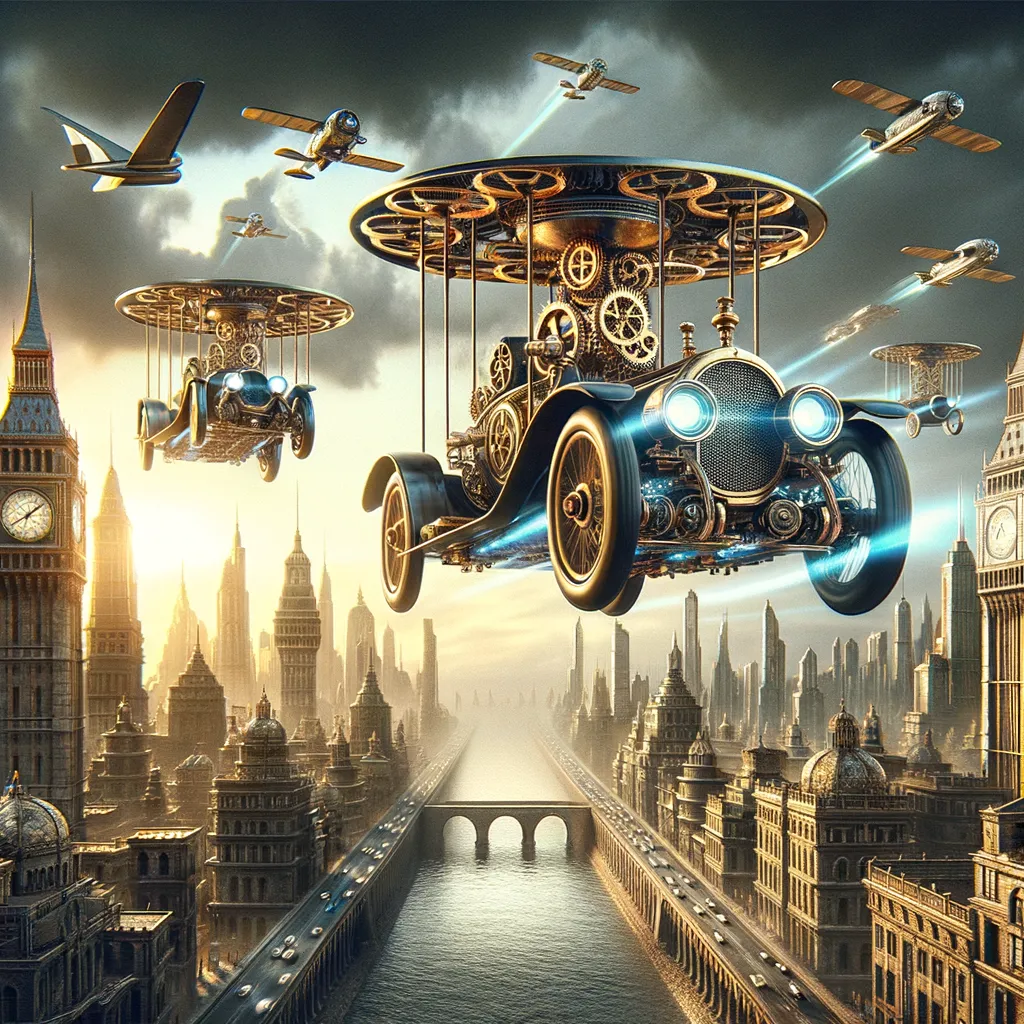
Welcome to the fascinating world of flying cars! In this article, we’ll take a thrilling journey through time, exploring the history of these futuristic vehicles and how they evolved from fantasy to reality.
The Dawn of Imagination
As far back as the early 20th century, inventors and visionaries ignited the idea of flying cars through their imaginations. Numerous science fiction novels, such as Jules Verne’s “Paris in the Twentieth Century” and H.G. Wells’ “The Shape of Things to Come,” captured the public’s fascination with the idea of personal airborne transportation.
This persistent dream gradually permeated various forms of media, from comic books and films to popular music – setting the stage for the eventual reality of flying cars in our daily lives.
From Blueprint to Prototype
In the mid-20th century, advancements in aerospace technology spurred the development of prototypes that aimed to bring flying cars closer to reality.
One noteworthy example is the Aerocar, designed by Moulton Taylor in the 1940s. This innovative vehicle transitioned seamlessly between being a road-worthy car and a small aircraft. Though it never gained widespread popularity, it laid the groundwork for future aerial innovations.
Another important milestone came in the 1970s with the development of the Moller Skycar. This vertical takeoff and landing (VTOL) vehicle captured the public’s imagination with its futuristic design. While it faced numerous technical challenges and failed to achieve commercial success, it introduced the concept of VTOL and inspired further research and development in this field.
Technological Leaps and Bounds
In recent decades, advancements in technology have propelled the idea of flying cars from mere fantasy to a concrete reality.
One of the most significant modern achievements in this field is the autonomous vertical takeoff and landing (VTOL) aircraft. Companies like Uber, Boeing, and Airbus have been exploring this technology, aiming to revolutionize urban mobility by introducing flying rideshare services.
This transformative potential has been driven by developments in electric propulsion systems, cutting-edge materials, and advanced avionics. These components are not only enhancing the efficiency and safety of flying cars, but also making them more environmentally friendly.
Regulatory Challenges and Future Prospects
While the technological progress in the realm of flying cars is impressive, there are still regulatory challenges to overcome before these vehicles become a common sight in our skies.
Government agencies, such as the Federal Aviation Administration (FAA), are working diligently to develop the necessary safety regulations and integration policies. Collaborations between the aviation industry, lawmakers, and urban planners are crucial to navigate the complex infrastructural and airspace management obstacles associated with flying cars.
Nevertheless, the potential benefits of flying cars are undeniable. They can alleviate traffic congestion, reduce travel times, and unlock new possibilities for urban and rural connectivity. With concerted efforts from various stakeholders, we can expect to witness the integration of flying cars into our daily lives in the not-so-distant future.
Embracing the Future of Mobility
As we gaze at the horizon of this exciting technological revolution, it’s important to be open-minded and receptive to the possibilities that flying cars bring.
From a fashion and art perspective, imagine the creative expressions that could emerge when designers and artists collaborate to infuse flying cars with style and aesthetic appeal. The sky, quite literally, would be the limit for self-expression in the world of high society and fashion.
And let’s not forget the influence of hip-hop culture on the flying car scene. Just as this genre revolutionized music and fashion, it’s likely to pave the way for innovative collaborations, eye-catching designs, and the integration of cutting-edge technology into flying cars.
So, embrace the future, keep an eye on the skies, and be prepared to soar to new heights with flying cars. The dream has evolved into a reality, and we’re on the cusp of witnessing a revolution in how we travel and experience the world.